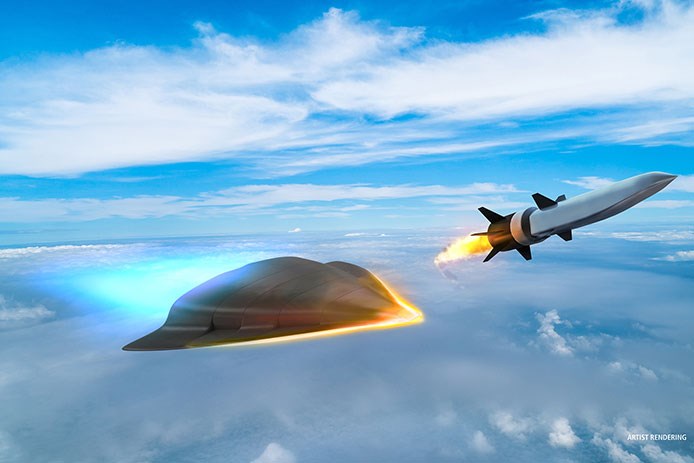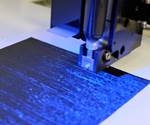Spirit AeroSystems, Albany Engineered Composites collaborate to expand hypersonic capabilities
Combination of high-temperature composite, structure capabilities and experience in 3D-woven near-net shape composites to help rapidly scale affordable hypersonic thermal protection systems.

Conceptual illustration unveils what composite hypersonic vehicles might look like in flight. Photo Credit: Raytheon Technologies.
It was announced on July 6 that Spirit AeroSystems Inc. (Wichita, Kan., U.S.) and Fiber Materials Inc. (collectively Spirit, Biddeford, Maine, U.S.), subsidiaries of Spirit AeroSystems Holdings Inc. and Albany Engineered Composites (AEC, Rochester, N.H., U.S.), a subsidiary of Albany International Corp. (AIN), have formally entered a technical collaboration agreement to capitalize on each company’s unique composite capabilities to deliver a suite of differentiated technical and industrialized solutions to more rapidly support hypersonic program developments, such as exceeding hypersonic design requirements, increasing production output, reducing waste and lowering cost.
More specifically, the combination of Spirit’s ultra-high temperature composites and structures capabilities, along with AEC’s experience in producing high volumes of 3D-woven, near-net shape composites, is said to create unmatched expertise and capacity to design, develop and manufacture a wide range of scalable, highly adaptable and affordable thermal protection system solutions for hypersonic missions, while lowering the risks of manufacturing hypersonic capable of large acreage and aeroshell configurations.
“The biggest challenge facing the Department of Defense [DoD] and primes in hypersonic programs is the need for scalable and affordable thermal protection systems that can be tailored to each mission and optimized for performance,” says Mark Miklos, vice president, hypersonic solutions at Spirit. “This collaboration enables elegant technical solutions while reducing the risk in accelerating program timelines and scaling to production.”
According to Greg Harwell, president of AEC, by working together and leveraging each company’s proprietary technologies and state-of-the-art manufacturing processes, Spirit and AEC are expected to achieve superior hypersonic design solutions not possible before this collaboration launched. “These synergies should assist with eliminating a serious market constraint and will deliver better results,” Harwell adds.
Related Content
-
Manufacturing the MFFD thermoplastic composite fuselage
Demonstrator’s upper, lower shells and assembly prove materials and new processes for lighter, cheaper and more sustainable high-rate future aircraft.
-
Welding is not bonding
Discussion of the issues in our understanding of thermoplastic composite welded structures and certification of the latest materials and welding technologies for future airframes.
-
Plant tour: Middle River Aerostructure Systems, Baltimore, Md., U.S.
The historic Martin Aircraft factory is advancing digitized automation for more sustainable production of composite aerostructures.













